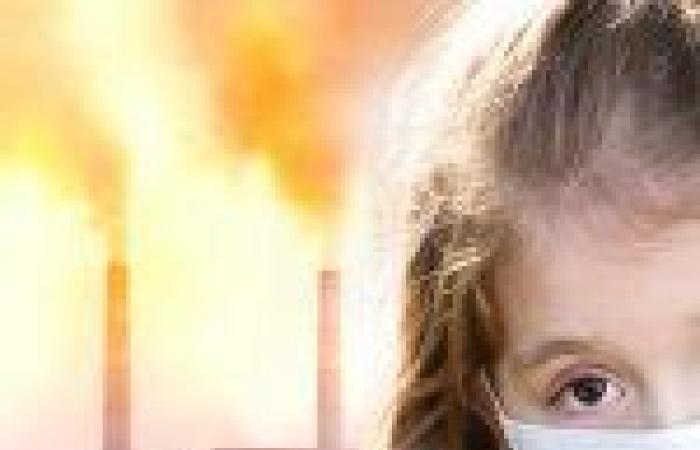More than 700,000 deaths of children under five are linked to air pollution. 500,000 of these deaths were linked to household air pollution from cooking at home with polluting fuels, especially in Africa and Asia. Every day almost 2 thousand children under 5 die due to the health impacts related to air pollution
19 JUN –
Air pollution is having an increasing impact on human health, becoming the second leading risk factor for death globally.
This is the “sentence” that comes from the fifth edition of the State of Global Air (SoGA) Report,
The Report, published today by the Health Effects Institute (HEI – an independent non-profit research organization based in the United States), produced for the first time in collaboration with Unicef, found that air pollution has been responsible for 8.1 million deaths globally in 2021. In addition to these deaths, many more millions of people live with debilitating chronic diseases, putting a strain on healthcare systems, economies and societies.
The Report finds that children under five are particularly vulnerable, and health effects include premature birth, low birth weight, asthma and lung disease. In 2021, exposure to air pollution was linked to more than 700,000 deaths of children under five, making it the second leading risk factor for death globally for this age group, after malnutrition. As many as 500,000 of these child deaths were linked to household air pollution from cooking at home with polluting fuels, especially in Africa and Asia.
However, there is some good news: since 2000, the mortality rate of children under five has decreased by 53%, thanks largely to efforts to expand access to clean energy for cooking, as well as improvements in access to health care and nutrition and to greater awareness of the harms associated with exposure to household air pollution.
Many countries, particularly those experiencing the highest levels of air pollution, are finally tackling the problem head-on. Air quality actions in regions such as Africa, Latin America and Asia, such as installing air pollution monitoring networks, implementing stricter air quality policies or Offsetting traffic-related air pollution by switching to hybrid or electric vehicles are having a measurable impact on pollution and improving public health.
But while progress is being made, more can be done to prevent air pollution from continuing to overtake other health risks as a major threat to millions of lives.
A global health concernFor the first time, this year’s report includes exposure levels and related health effects of nitrogen dioxide (NO2), including the impact of NO2 exposure on the development of children’s asthma. Traffic exhaust is a major source of NO2, meaning dense urban areas, particularly in high-income countries, often experience the highest levels of NO2 exposure and health impacts.
The new SoGA Report offers a detailed analysis of recently released data from the 2021 Global Burden of Disease study, showing the serious impact on human health of pollutants such as outdoor fine particulate matter (PM2.5), household air pollution, l ozone (O3) and nitrogen dioxide (NO2) worldwide. The report includes data from more than 200 countries and territories around the world, indicating that nearly every person on earth breathes unhealthy levels of air pollution every day, with far-reaching health implications.
More than 90% of deaths due to air pollution – 7.8 million people – are attributed to PM2.5 air pollution, including ambient and domestic pollution. These tiny particles, measuring less than 2.5 micrometers in diameter, are so small that they remain in the lungs and can enter the bloodstream, affecting many organ systems and increasing the risk of noncommunicable diseases in adults such as heart disease, l stroke, diabetes, lung cancer and chronic obstructive pulmonary disease (COPD). According to the report, PM2.5 was found to be the most consistent and accurate indicator of adverse health outcomes worldwide.
“We hope our State of Global Air Report provides both the information and inspiration for change,” said HEI President, Elena Craft – air pollution has huge health implications. We know that improving air quality and global public health is practical and achievable.”
Air pollution and climate change PM2.5 air pollution comes from the burning of fossil fuels and biomass in sectors such as transport, homes, coal-fired power plants, industrial activities and forest fires. These emissions not only impact people’s health, but also contribute to greenhouse gases that are warming the planet. The most vulnerable populations are disproportionately affected by both climate risks and polluted air.
In 2021, long-term exposure to ozone contributed to an estimated 489,518 deaths globally, including 14,000 ozone-related COPD deaths in the United States, higher than in other high-income countries. As the world continues to warm due to the effects of climate change, areas with high levels of NO2 can expect higher levels of ozone, resulting in even more serious health effects.
“This new report is a stark reminder of the significant impact that air pollution has on human health, with too high a burden borne by young children, older populations and low- and middle-income countries,” he said. Pallavi Pant, Head of Global Health at HEI, who oversaw the publication of the SoGA report. “This clearly indicates an opportunity for cities and countries to consider air quality and air pollution as high-risk factors when developing health policies and other noncommunicable disease prevention and control programs.”
Children’s health
Some of the greatest health impacts of air pollution are seen in children. Children are particularly vulnerable to air pollution and its damage can begin as early as the womb, with health effects that can last a lifetime. For example, children inhale more air per kilogram of body weight and absorb more pollutants than adults while their lungs, bodies and brains are still developing.
Exposure to air pollution in young children is linked to pneumonia, responsible for 1 in 5 child deaths globally, and asthma, the most common chronic respiratory disease in older children. The inequalities linked to the impact of air pollution on children’s health are staggering. The air pollution-related death rate in children under five in East, West, Central and Southern Africa is 100 times higher than their counterparts in high-income countries.
“Despite advances in maternal and child health, nearly 2,000 children under five die every day due to health impacts related to air pollution,” he said Kitty van der Heijden, deputy director general of Unicef. “Our inaction is having profound effects on the next generation, impacting lifelong health and well-being. The global urgency is undeniable. It is imperative that governments and businesses take these estimates and locally available data into account and use them to develop meaningful, child-focused actions to reduce air pollution and protect children’s health.”
June 19, 2024
© All rights reserved
Other articles in Studies and Analysis

















